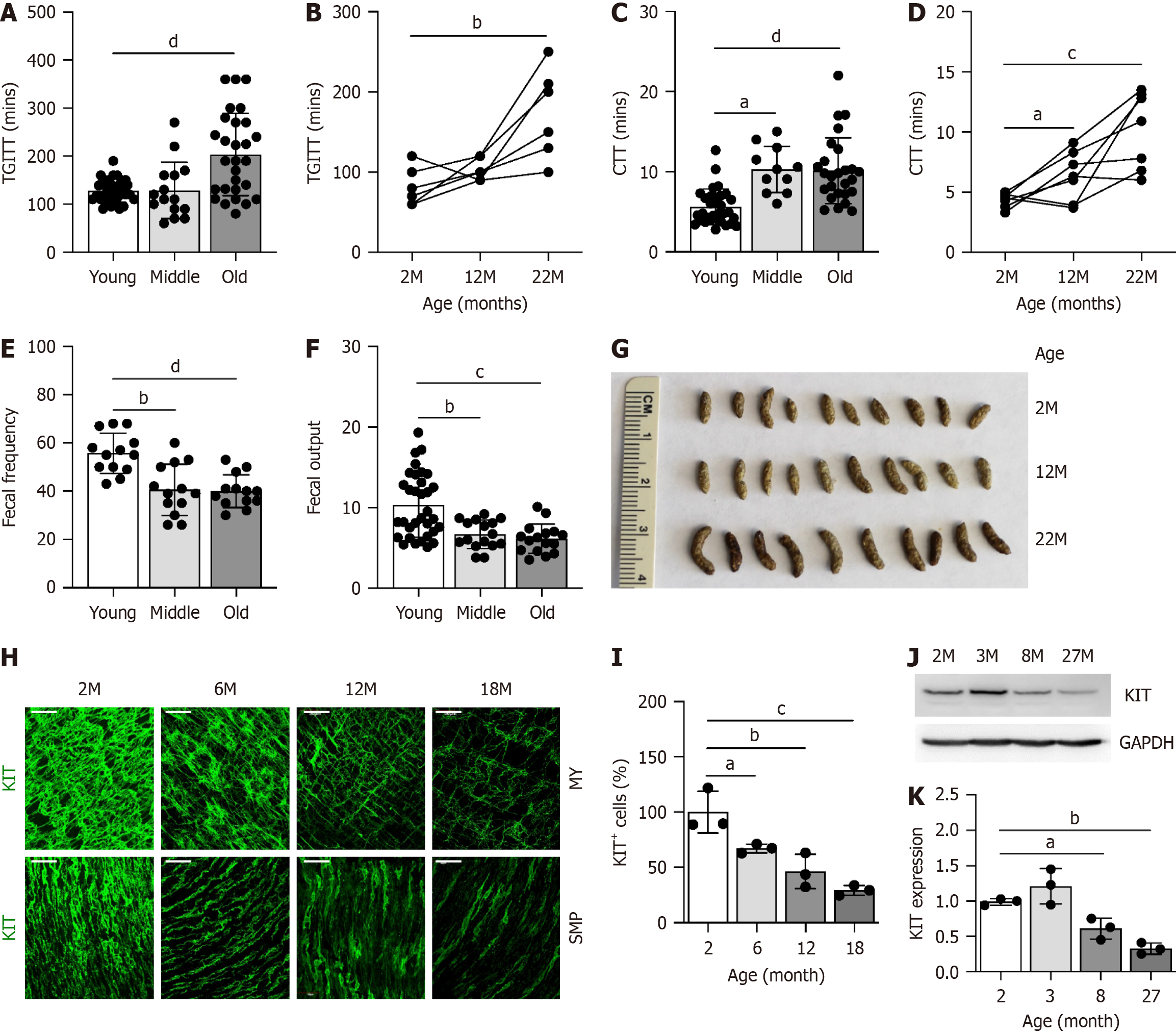Copyright
©The Author(s) 2025.
World J Gastroenterol. Jun 28, 2025; 31(24): 104437
Published online Jun 28, 2025. doi: 10.3748/wjg.v31.i24.104437
Published online Jun 28, 2025. doi: 10.3748/wjg.v31.i24.104437
Figure 1 Aged mice develop gastrointestinal dysmotility with a progressive reduction in interstitial cells of Cajal.
A: Total gastrointestinal transit time (TGITT) in young (2-6 months), middle age (8-14 months), and old (18-30 months) C57BL/6J mice. n ≥ 16 per group; B: Changes in TGITT in individual mice at 2, 12, and 22 months. n = 6; C: Colonic transit time (CTT) in young, middle age, and old mice, n ≥ 11 per group; D: Changes in CTT in individual mice at 2, 12, and 22 months. n = 6; E: Fecal frequency. n = 13; F: Fecal pellet output. n = 18; G: Fecal pellets collected; H: Whole-mount confocal images of interstitial cells of Cajal (ICC) in submucosal plexus (SMP) and myenteric plexus layer (MY) ICC in colonic smooth muscle detected by KIT antibody (green) in mice at 2, 6, 12, and 18 months. Scale bars were 50 μm; I: Quantification of KIT+ cells in panel H, presented as a percentage of the total across both MY and SMP layers. n = 3; J and K: Western blot and quantification of KIT in the proximal colonic smooth muscle in mice at 2, 3, 8 and 27 months. n = 3. aP < 0.05; bP < 0.01; cP < 0.001; dP < 0.0001; TGITT: Total gastrointestinal transit time; CTT: Colonic transit time; MY: Myenteric plexus; SMP: Submucosal plexus.
- Citation: Baek G, Singh R, Ha SE, Cho H, Padmanabhan S, Vishwanath V, Kim MS, Seon D, You J, Lee MY, Ro S. miR-10a-5p and miR-10b-5p restore colonic motility in aged mice. World J Gastroenterol 2025; 31(24): 104437
- URL: https://www.wjgnet.com/1007-9327/full/v31/i24/104437.htm
- DOI: https://dx.doi.org/10.3748/wjg.v31.i24.104437









